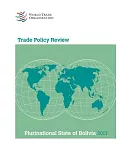The global financial crisis that began in late 2008 has set back ambitious infrastructure development plans among many countries in Europe and Central Asia (ECA). Many such plans relied on
Public-Private Partnerships (PPP) arrangements. Furthermore, the financial crisis resulted in sharp declines in gross domestic product (GDP) and country's deteriorating fiscal space restricted
the scope for maintaining the level of investment or introducing counter-cyclical measures driven by public sector investment in infrastructure. Soaring levels of public debt, limited room to
cut expenditures, and lower tax receipts due to slower than expected economic growth will mean that the 'fiscal space' in the region to make public investments in infrastructure will be
strained in the coming years. The ability of many ECA country governments to expand expenditure any further, even for productive investments in infrastructure, will thus prove
challenging.Nevertheless, the year 2010 saw some countries and cities reaching financial close on multi-billion projects while others are still struggling to close their first PPP project in
highway. The comparison of the Pulkovo Airport in Russia and the Comarnic-Brasov Highway in Romania is an illustration of this situation. On one hand St Petersburg developed a robust PPP
project that involved the rehabilitation of an existing asset with established demand. On the other hand, the Romania examples show how projects with large capital requirements with unknown
demand risk are still considered risky for the private sector, especially in the context of reduced liquidity from the financial crisis.This study shows that PPP financing remains viable and
can bring value to the economy, despite the difficulties that projects faced. The global financial crisis has created new opportunities for the ECA Region to refocus PPP projects on
value-for-money and financial sustainability, as the primary drivers for private participation, and using the range of options and innovative approaches discussed above.





















